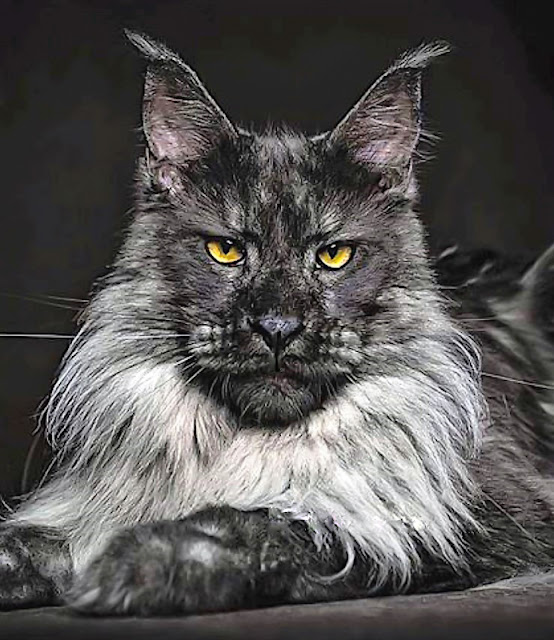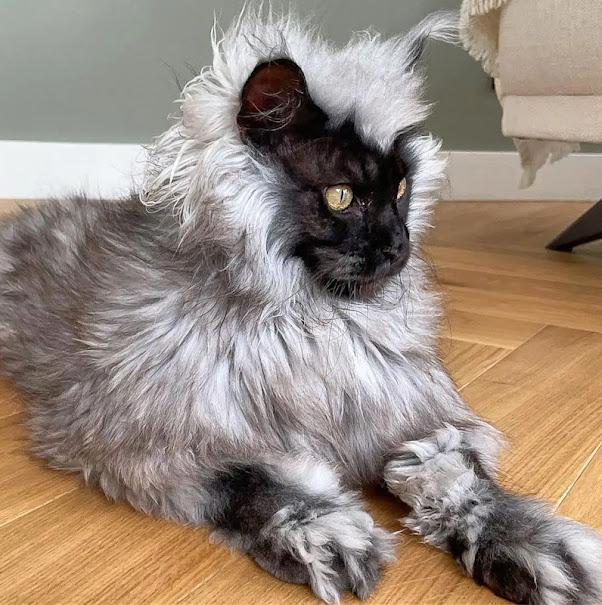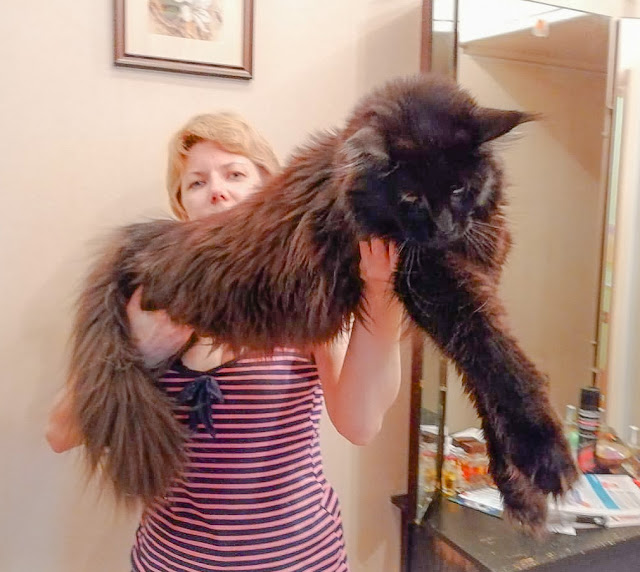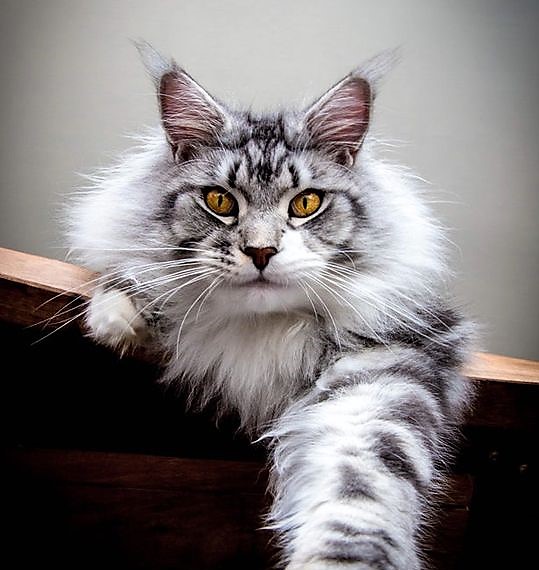Maine Coon did not eat for a week and became jaundiced
Fatty liver disease in a Maine Coon was secondary to megacolon in this medical case, which may interest some people and it may help one or two cat owners which is all I can expect. Prompt veterinary attention might have prevented this health problem and before that a look at the living arrangements of this cat.
In this instance a 6.5-year-old male, sterilised Maine Coon was taken to an emergency service veterinary clinic in the US (NYSCVM Emergency Service) with the main complaint of icterus which is a technical word describing jaundice. Jaundice is the main symptom of a malfunctioning liver or liver disease. For example, in people it is present in those who are alcoholics because alcoholism damages the liver.
 |
| Maine Coon at vet. This picture is for illustrative purposes only and this is not the cat concerned. Image in the public domain (as assessed). |
This Maine Coon had a history of intermittent constipation and weight loss. They had lost 4 pounds in one month and a history of anorexia. Veterinarians use the word "anorexia" to mean a cat that has lost their appetite and no longer eats and therefore they lose weight.
This cat had become completely anorexic for an entire week just prior to being taken to the veterinary clinic. That means they had not eaten for a week. I find that a very long time for a cat caregiver to wait before they took their cat to a vet by the way. But it is not my job to criticise anybody in this short post.
RELATED: Home Treatment for Megacolon in Cats.
The cat was also treated for aggression with other cats and hair pulling. Was the cat unhappy because they were in a multi-cat home and was the cat being bullied? As mentioned, the cat was jaundiced and the jaundice was visible across the body therefore the skin was yellow. There was muscle wasting, mild dehydration, and the cat was lethargic and weighed 14 pounds. The fact that they weighed 14 pounds indicates how heavy this cat was before anorexia set in.
A chemistry panel i.e. a full checkup using I presume a blood sample, indicated hyperbilirubinemia, increased alkaline phosphatase (ALP), alanine animotransferase (ALT), and aspartate aminotransferase (AST) activities, a normal gamma glutamyl transferase (GGT) and decreased blood urea nitrogen and panhypoproteinemia. That is all very technical and I'm not going to try and go over it here.
RELATED: Feline Fatty Liver Disease.
However, hyperbilirubinemia, for example, refers to a build-up of bilirubin in the blood, causing yellow discoloration of the eyes and skin, called jaundice. The cat was stabilised with intravenous fluids with a balanced electrolyte solution. The cat was also fed with a nasal tube.
The interesting aspect of this report, from my perspective, is that megacolon in cats has been linked to hepatic lipidosis or fatty liver disease. Megacolon is a severe and irreversible dilatation of the colon. It results in faecal retention and hypo motility resulting in constipation which is exactly what this cat suffered from together with fatty liver disease.
RELATED: 17 causes of constipation in domestic cats.
The most common cause of megacolon in cats is persistent constipation. It seems that the problem is circular: constipation causing megacolon and megacolon causing constipation. One of the most common causes of constipation in cats is dehydration due to inadequate fluid intake which can result from a dry food diet. And that state of affairs can happen to an anorexic cat. The owner should have responded much sooner.
RELATED: My Home Treatment for Cat Constipation.
Clearly a full veterinary checkup is required when a cat is not eating even for a couple of days and this page is not meant to substitute that.










Comments
Post a Comment
Please share your Maine Coon experiences.